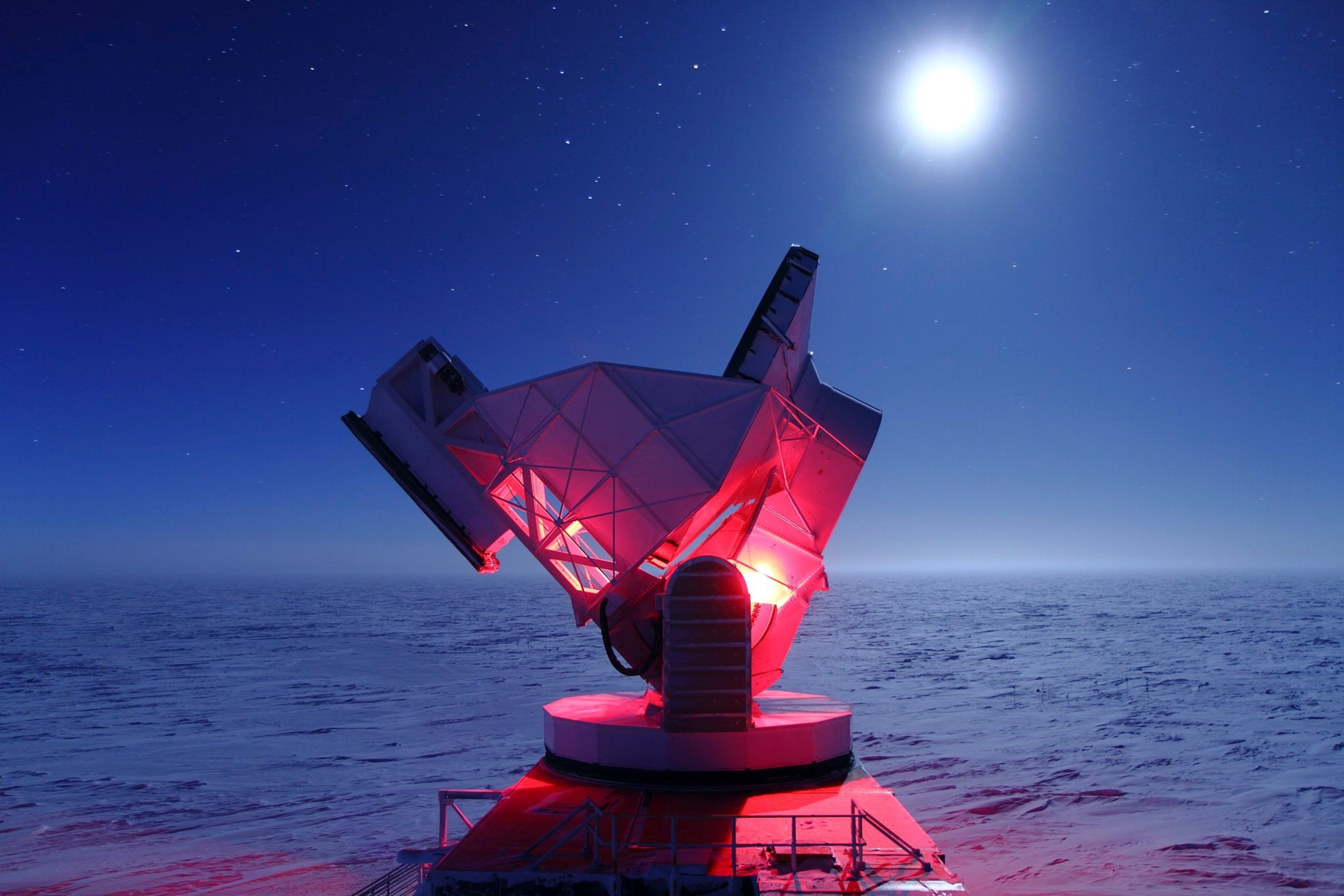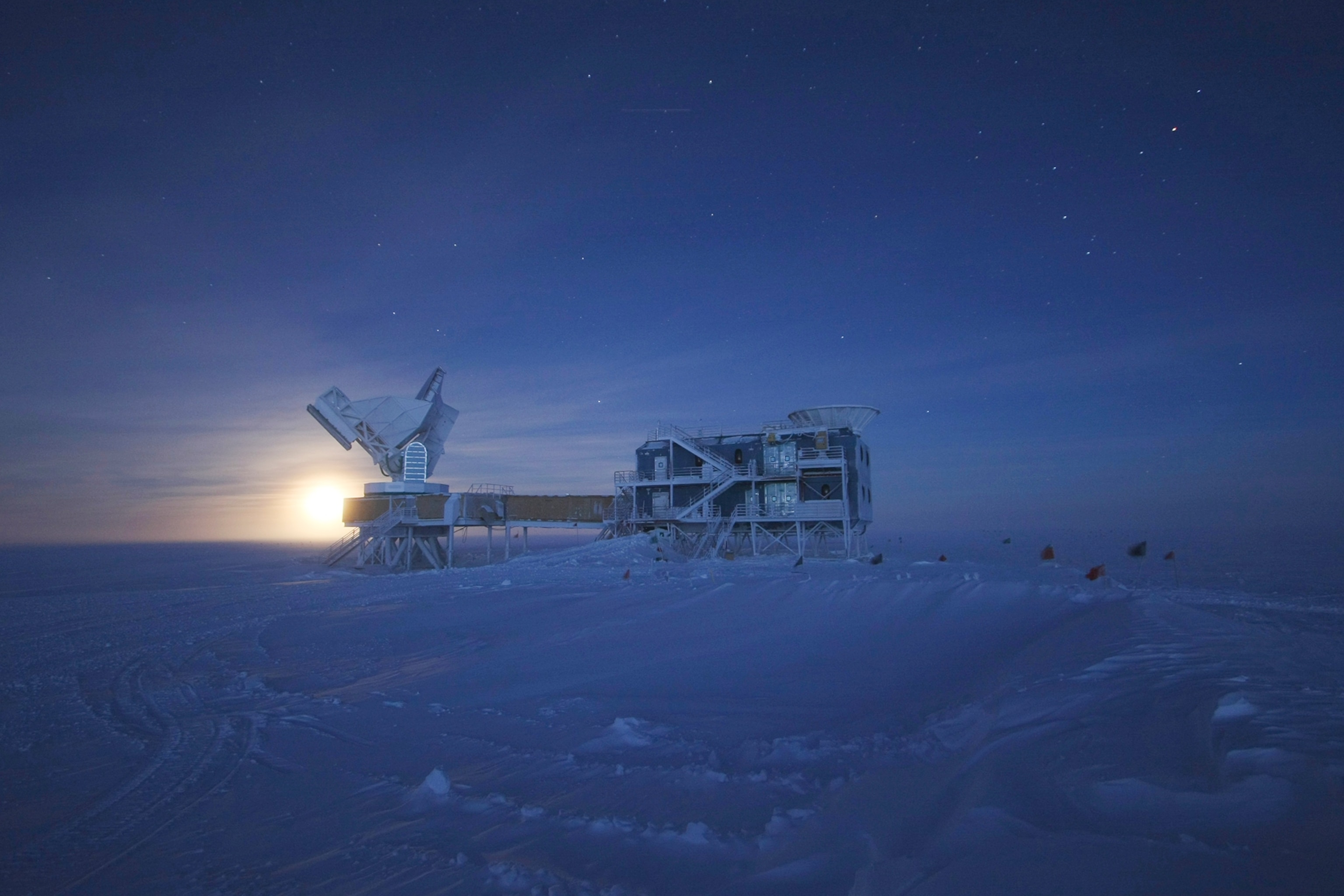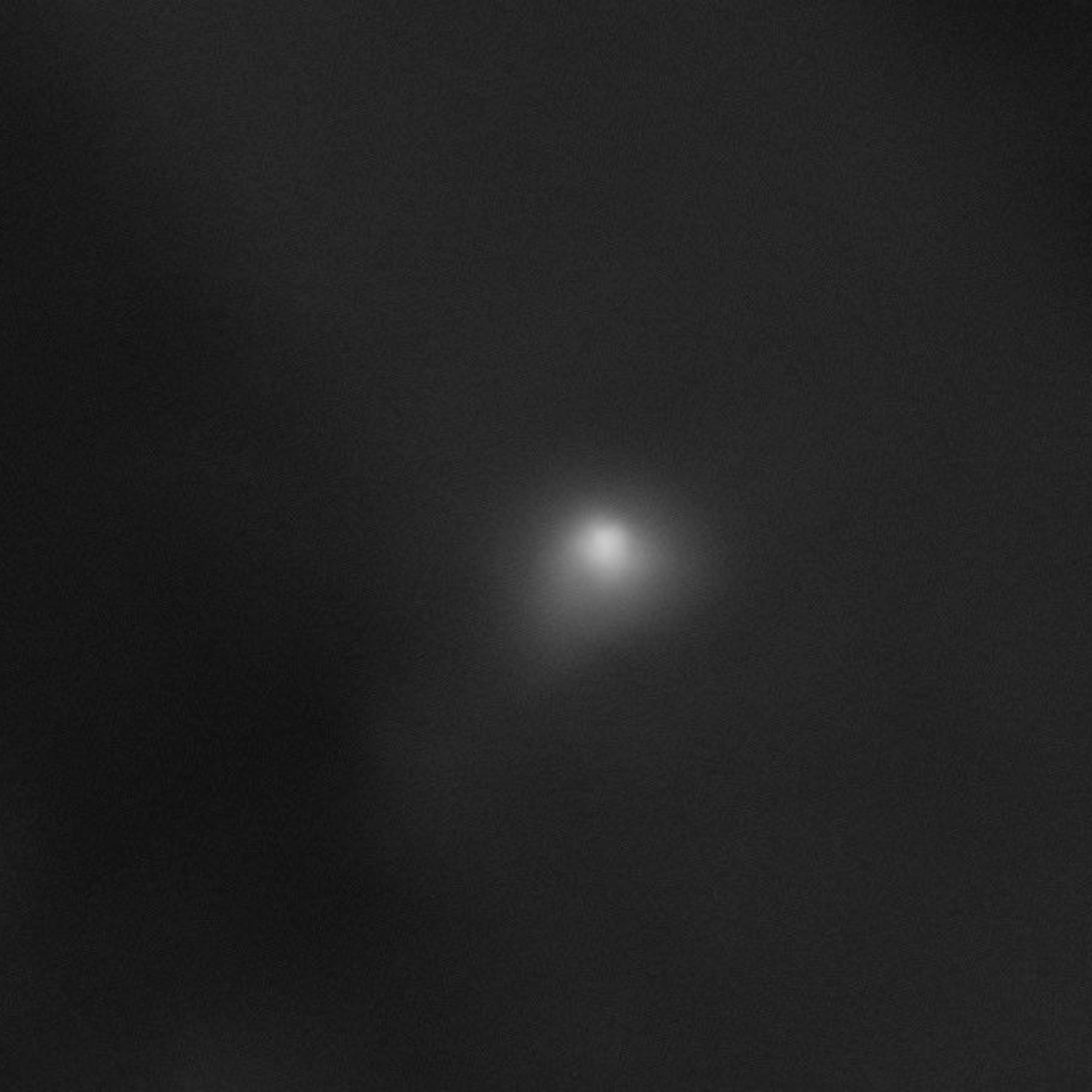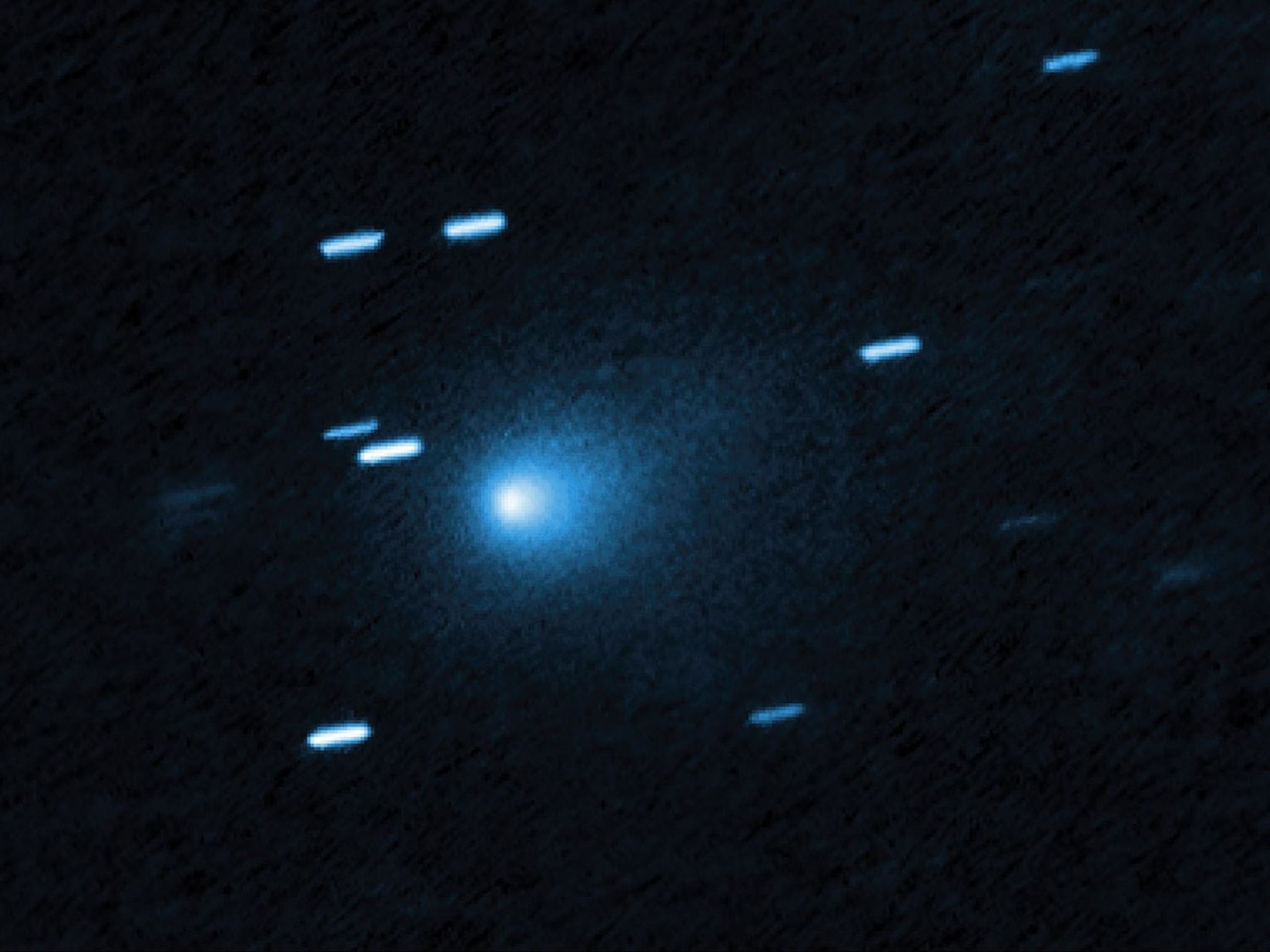
The South Pole Is a Great Place to View Space
The Big Bang radiation discovery happened there—and when you look at Antarctic conditions, you can understand why.
The South Pole in winter is a far from ideal spot for humans. The temperature averages -72 degrees Fahrenheit (-58 degrees Celsius), it's dark for six months, and it's as bone dry as you can get on Earth.
All those extremes and more, however, make it an ideal spot for astronomers—particularly those interested in detecting the tiny wavelengths of radiation that were created when the universe was new.
And so the discovery this week about the moments that followed the Big Bang—the first physical evidence that the universe expanded at a stupendous rate—came from years of observing cosmic microwave background radiation from the very bottom of the Earth.
Using a small but powerful telescope at the Amundsen-Scott South Pole Station high up on the Antarctic plateau, the team of researchers put up with the harsh conditions to come up with one of the most important breakthroughs in cosmology.
"The South Pole is the closest you can get to space and still be on the ground," said John Kovac of the Harvard-Smithsonian Center for Astrophysics in Massachusetts, and leader of the Background Imaging of Cosmic Extragalactic Polarization (BICEP) collaboration. "It's one of the driest and clearest locations on Earth, perfect for observing the faint microwaves from the Big Bang."

The absence of water vapor and generally thin atmosphere are particularly important for observing radiation at miniscule, submillimeter wavelengths. Where the atmosphere is not so dry, water vapor can absorb microwave signals that come in, producing confusing and incomplete results.
"You're standing on almost two miles of ice at the South Pole; that's what happens to water there," said Jamie Bock of the California Institute of Technology in Pasadena, another BICEP team member. "The air pressure is also low because of the altitude, and all this greatly reduces noise from the atmosphere."
The bitter cold keeps winter wind to a minimum—and that provides stability for telescope observations as well.
Using a telescope at the Pole can reduce noise not only from Earth's atmosphere, but from interstellar radiation and dust, too. That's because a telescope at Amundsen-Scott has perfect access to what is known as the Southern Hole—a patch of unusually clean sky that allows for optimal viewing into very deep space and consequently to the very early universe.

Relentless Data Collection
The Amundsen-Scott station is now a substantial science outpost funded and managed by the National Science Foundation, with several hundred scientists and support staff in the summer. The staff shrinks to fewer than 50 during the long winter nights, but that's when most of the observing gets done.
The telescope's location at the geographic South Pole allows for generally easy operations and aiming. Since the stars don't rise and set but rather appear unmoving, the telescope operators can find the one spot they want to study and basically stay on it with little change for the full six-month winter.
"All we need is one person down there with the instrument during the winter," Bock said. "Everything is set up to relentlessly collect our data."
The scientist who usually stays with the telescope is Steffan Richter of Harvard University. For nine long Antarctic winters he has tended the instruments—walking almost a mile every day from the base to the telescope.
"Yes, it is very, very cold and dark," he said. "But the project is so compelling. And how many other people see amazing auroras in the sky, these spectacular light shows, on their way to work? We see them all the time."
A regular at the South Pole, Richter never works with the same telescope for too long.
There's a kind of Moore's law of telescope technology, he said, with regular exponential improvements as in the world of computing. Three different and increasingly capable telescopes have already been used in the Big Bang-inflation study, and one more is on the way.

"A Continent Dedicated to Science"
The BICEP instruments were put together with one purpose: to look for cosmic microwave background radiation that had been changed by the gravitational forces unleashed by the Big Bang. Like most of the instruments in Antarctica, the telescope is small as major telescopes go; its aperture to take in light is only 26 centimeters (10.25 inches) across. But it has two lenses inside that deflect and intensify the signal—rather like Galileo's first telescope.
The largest telescope at Amundsen-Scott is the National Science Foundation's South Pole Telescope. With a 10-meter (33-foot) radio dish, it collects radiation with the primary goal of identifying early galaxy clusters through their interaction with the cosmic microwave background.
Long used as a window into the cosmic microwave background, Antarctica is also being used to collect radiation at other wavelengths. In 2012, for instance, a telescope that captures the far infrared portion of the spectrum was transported to Amundsen-Scott and then flown 500 miles (805 kilometers) to a ridge 13,000 feet (3,962 meters) above sea level.
From that perch, the High Elevation Antarctic Terahertz (HEAT) telescope has already been credited with detecting carbon in a vast and distant molecular cloud forming in the Milky Way. It's the kind of discovery generally made from orbiting telescopes, but is now possible from a robotic (and much less expensive) telescope on Earth.
And it's no surprise the finding came from Antarctica. Vladimir Papitashvili, program manager for Antarctic Astrophysics and Geospace Sciences at the National Science Foundation, says: "It's a continent dedicated to science and science alone. Doing work down there is hard, and the conditions set limits on what's possible. But the conditions also make for some unique science."







